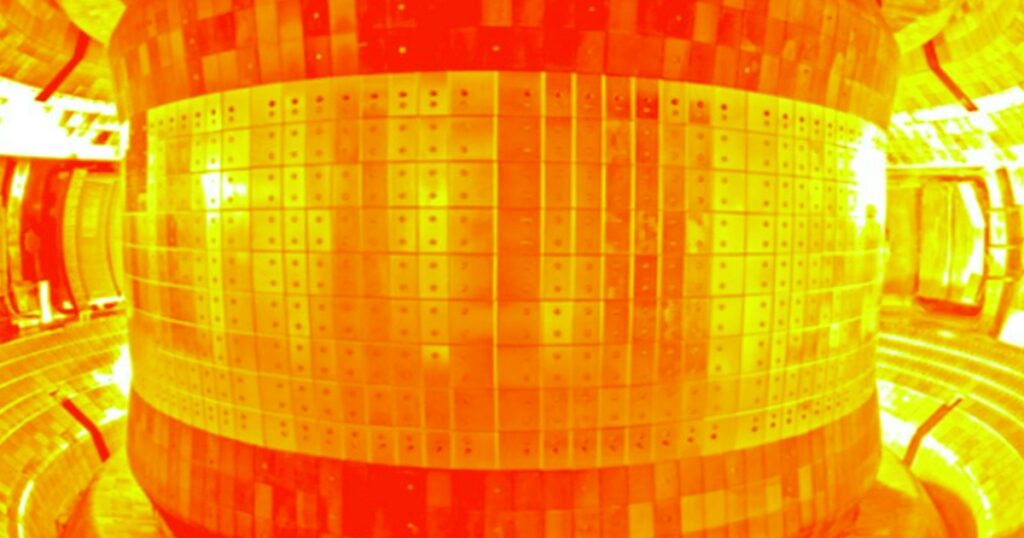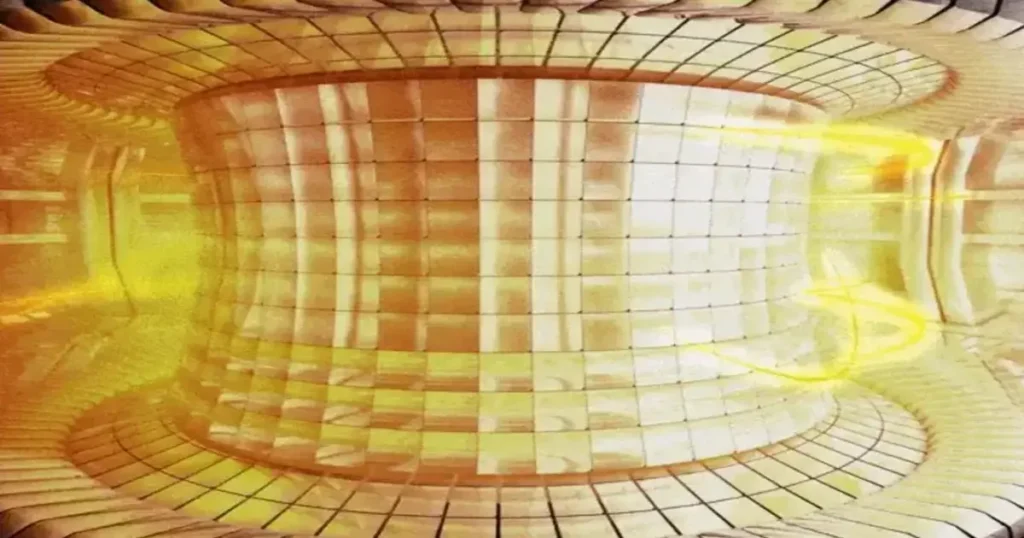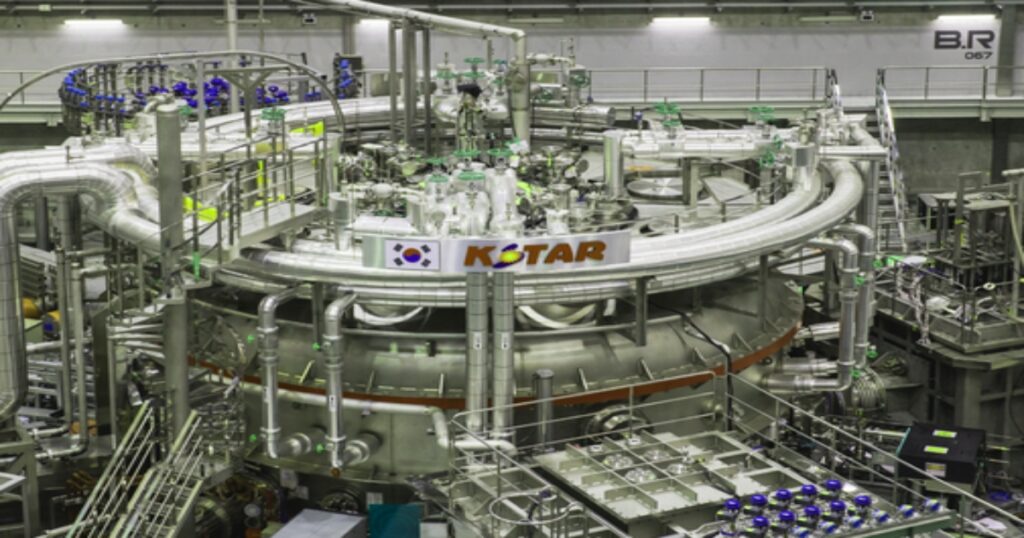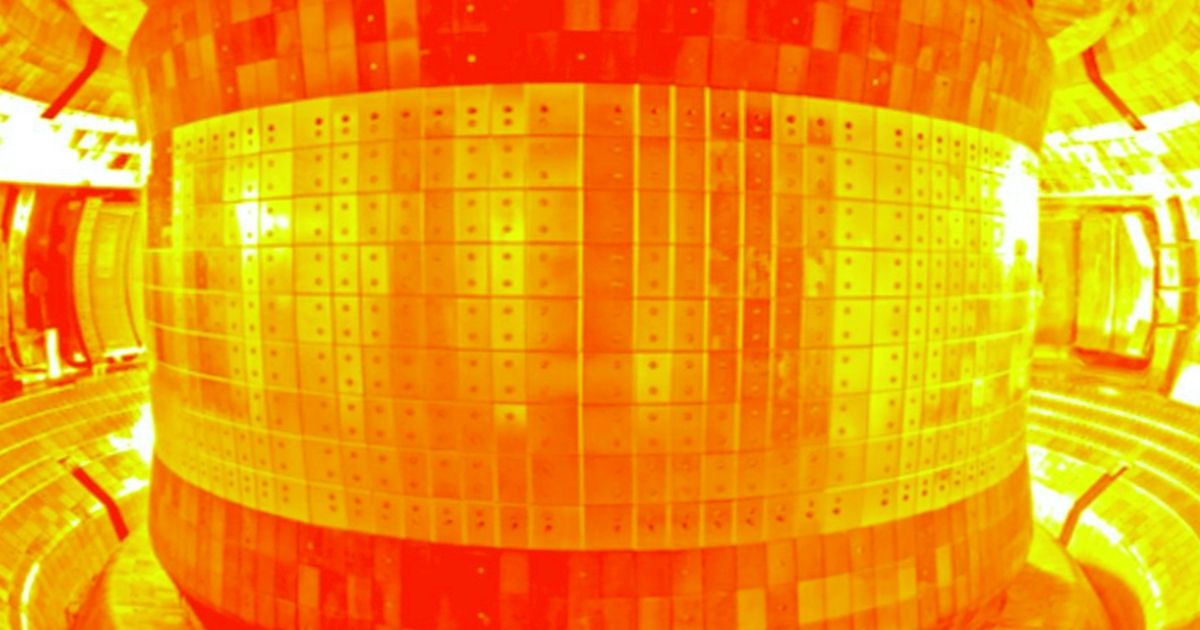South Korea’s Artificial Sun has set a new Fusion Record. Scientists have reported that after superheating a plasma loop to 180 million degrees Fahrenheit (100 million degrees Celsius) for 48 seconds, South Korea’s nuclear fusion reactor has established a new record for fusion.
The previous world record of 31 seconds was broken by the Korea Superconducting Tokamak Advanced Research (KSTAR) reactor. The record was established by the same reactor in 2021.
The development is a modest but significant step toward a nearly limitless supply of renewable energy. This is a new record for the fusion reactor project, established during testing between December 2023 and February 2024.

For almost 70 years, researchers have been attempting to harness the power of nuclear fusion, the process that produces starlight. So-called main-sequence stars turn mass into light and heat by fusing hydrogen atoms at extraordinarily high pressures and temperatures to produce helium.
This process produces vast quantities of energy without creating greenhouse gases or long-lasting radioactive waste.
However, it is not an easy undertaking to replicate the circumstances found inside stars’ hearts. One of the four states of matter, plasma is made up of negatively charged free electrons and positive ions.
The most popular design for fusion reactors is the tokamak, which traps plasma inside a reactor chamber shaped like a donut using strong magnetic fields.
But it has taken a lot of work to keep the hot, turbulent coils of plasma in place long enough for nuclear fusion to occur. The first tokamak was built in 1958 by Soviet scientist Natan Yavlinsky, but no one has ever been able to build a reactor that can produce more energy than it can absorb.

The process of fusion is a replication of the mechanism that produces heat and light in stars. Experts in the subject seek to harness the immense power released by fusing hydrogen and other light elements to provide limitless, carbon-free electricity. This is frequently referred to as the energy transition’s “Holy Grail.”
Managing a plasma hot enough to fuse has proven to be one of the major obstacles. Because fusion reactors must run at pressures far lower than those at which fusion normally occurs in star cores, they must be built at temperatures that are several times hotter than the sun.
For example, the actual sun‘s core may reach temperatures of around 27 million Fahrenheit (15 million Celsius), yet its pressure is about 340 billion times that of Earth‘s sea level air.
The comparatively simple element is heating the plasma to these temperatures, the technically challenging part is controlling it so that it doesn’t destroy the fusion process while also burning through the reactor. Usually, magnetic fields or lasers are used for this.
The scientists made adjustments to the architecture of their reactor, such as substituting tungsten for carbon to increase the effectiveness of the tokamak’s “divertors,” which remove heat and ash from the reactor, in order to increase the plasma’s burning period beyond the previous record-breaking run.

Tungsten diverters’ success can provide valuable data for the International Thermonuclear Experimental Reactor (ITER) project. A $21.5 billion worldwide fusion megaproject called ITER is being built in France by a number of nations, including the US, the EU, Russia, China, Korea, and China.
“Despite being the first experiment run in the environment of the new tungsten divertors, thorough hardware testing and campaign preparation enabled us to achieve results surpassing those of previous KSTAR records in a short period,” Si-Woo Yoon, the director of the KSTAR Research Center, said in a statement.
KSTAR scientists are aiming to push the reactor to sustain temperatures of 180 million F for 300 seconds by 2026.
The record joins others made by competing fusion reactors around the world, including one by the U.S. government-funded National Ignition Facility (NIF), which sparked headlines after the reactor core briefly put out more energy than was put into it.
What is an Artificial Sun?
The concept of an “artificial sun” refers to a device that replicates the Sun’s energy production process, nuclear fusion. Currently, there isn’t a fully functional artificial sun in existence. However, several countries and research institutions are actively pursuing this technology through nuclear fusion research projects.
Other Countries to Achieve Artificial Sun Record:
China has achieved the world record for sustaining a nuclear fusion reaction in an experimental reactor called the EAST (Experimental Advanced Superconducting Tokamak). China’s East holds the record for the highest recorded temperature for plasma.
They achieved this feat for over 17 minutes (1,056 seconds) at a scorching temperature of 126 million degrees Celsius (five times hotter than the sun’s core).
China’s EAST holds another record for the longest steady-state high-confinement mode plasma operation. This achievement happened on April 12th, 2023, where they sustained plasma for 403 seconds (almost 7 minutes).
Conclusion:
An artificial sun, replicating fusion power like our real sun, remains a scientific dream. Major technological hurdles exist, requiring immense temperatures & control. However, research in fusion reactors offers promising glimpses of a future powered by clean, limitless energy. We’re on the right track, but the sun might reign supreme for a while longer.
